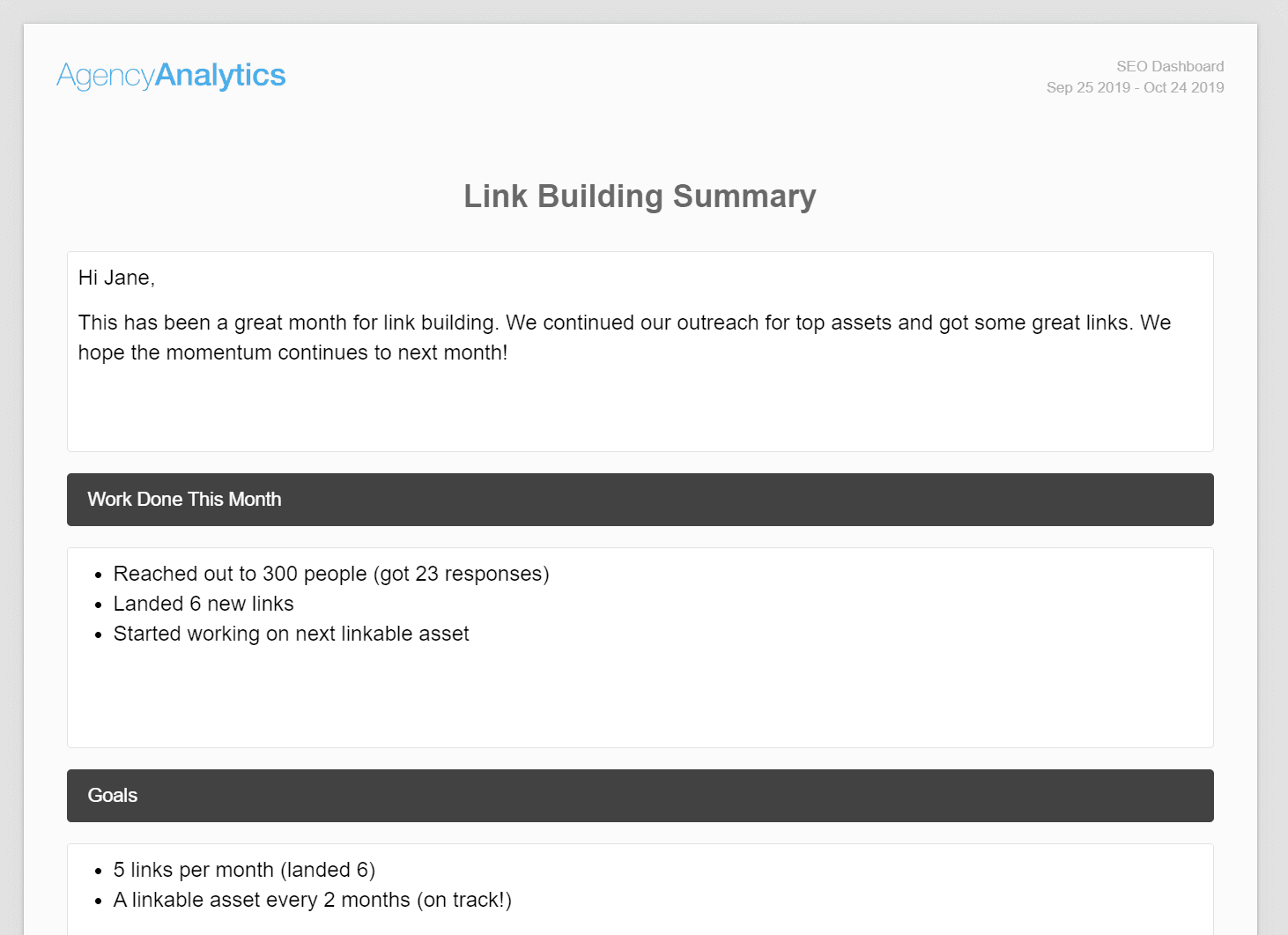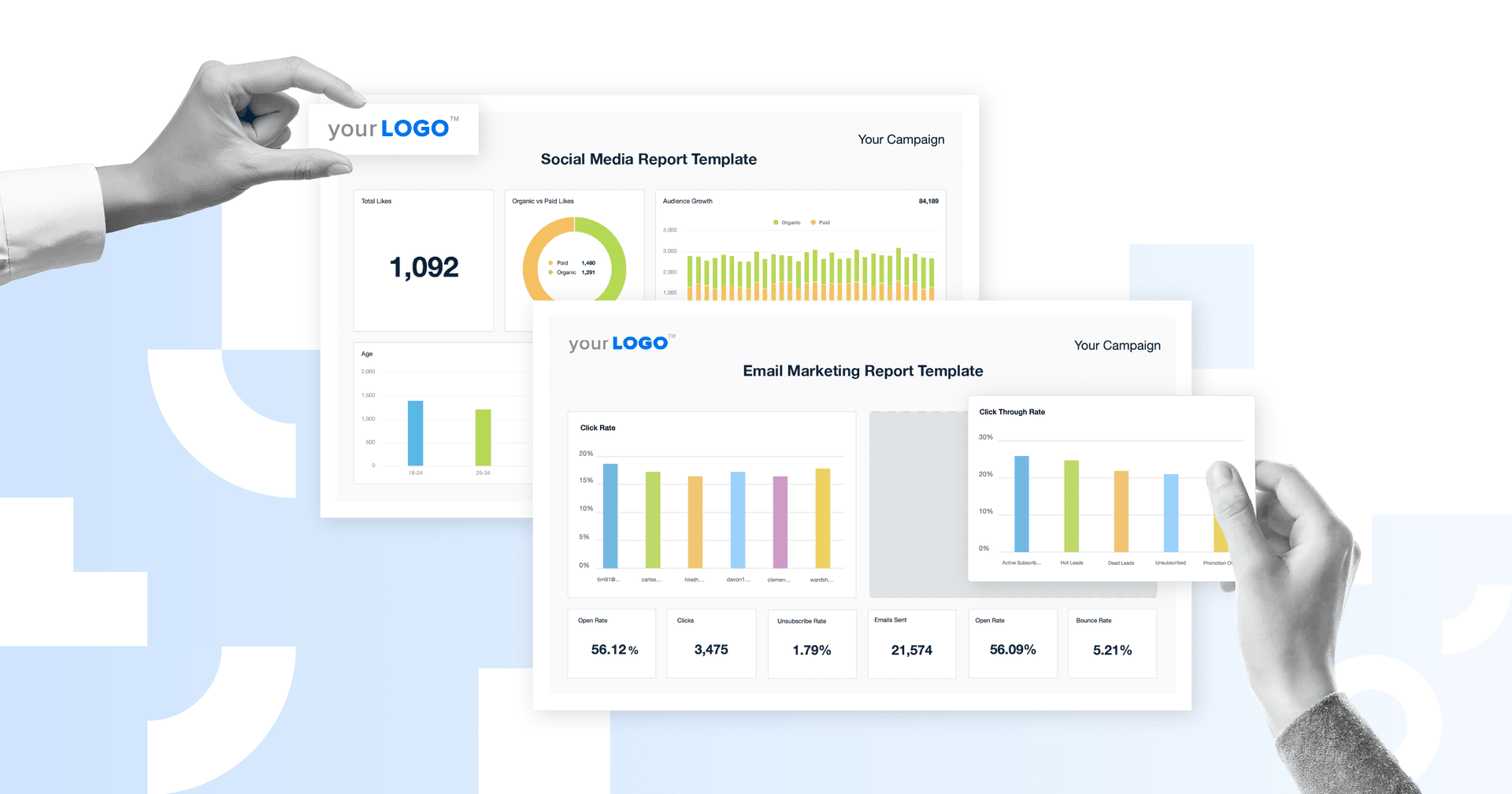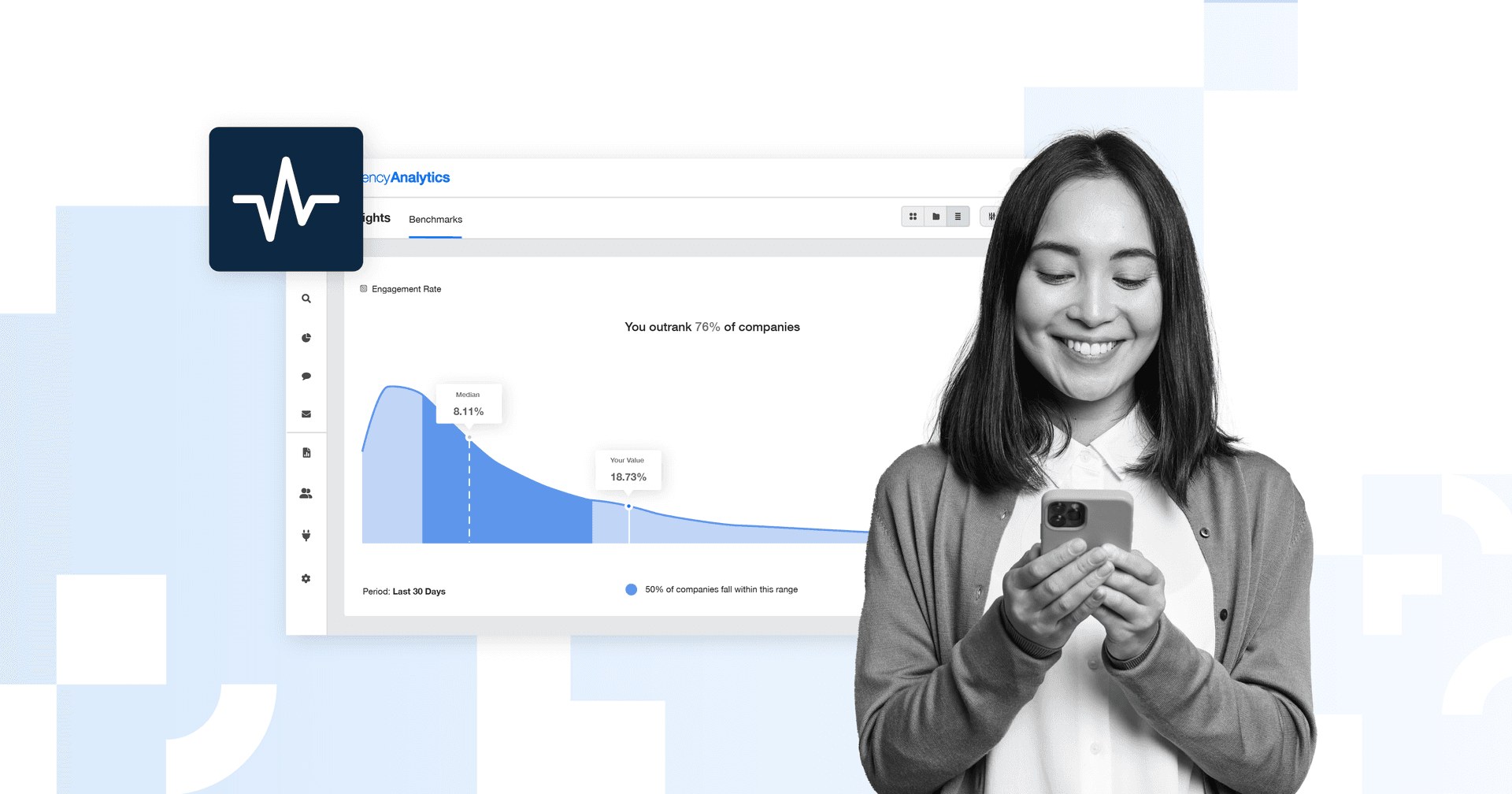Table of Contents
QUICK SUMMARY:
A marketing report summary highlights key metrics and campaign progress in a concise, and informative way. It sets the stage for the more detailed sections of the report, ensuring clients understand the status and achievements of their campaigns. An effective summary answers questions about updates and progress, guiding clients through the report and reinforcing the agency's expertise in market analysis.
Most clients look favorably upon agencies that share regular reports as a means of tracking progress, highlighting key metrics, and maintaining clear communication.
However, there’s a big difference between sharing just any report and sharing one that provides real value.
When you make a marketing report, every aspect is important. But it all starts with the summary. Not only is it the first thing your client will see, but it also provides them with details of what to expect on the following pages.
With this in mind, let’s examine what it takes to write an effective report summary.
Why Your Clients Need a Clear and Concise Marketing Summary
We’ve all been there—staring at a report that feels more like a data dump than a actionable update. Your clients are no different. They’re busy, juggling multiple priorities, and relying on you to distill complex marketing efforts into something meaningful. A dense, jargon-filled report risks overwhelming them and diluting the value of your hard work.
Instead, think of your summary as a bridge. It’s your opportunity to meet your client where they are, address their frustrations, and provide clarity. Automating PPC reports frees time to craft better summaries that clients will read. Ask yourself:
What’s the one thing they care most about this month?
How can you show them you’re moving the needle on their goals without bogging them down in details?
By making your summary approachable and focused on their priorities, you’re not just delivering data—you’re building trust and ensuring your clients feel confident in your partnership.
Length of a Report Summary
As you begin to write the report summary, the first question you typically have centers on length. How long should a report summary be?
This will vary based on factors such as the services the client has engaged you for, the amount of work completed during the specified period, and how much data you have to share.
Here’s an example from our link building report template:

Introduction: three sentences
Work Done This Month: three bullet points
Goals: two bullet points
Don’t hold yourself to this length, but instead include as much information as necessary to summarize the reporting period as a whole.
Keep in mind this isn’t the place to include all the data you want to share. For example, the work done this month section, provides a high-level overview, with the finer details shared in the following section.
Also, if you want more report summary examples, be sure to check out our report templates, like the pre-built email marketing report template.
What to Include in the Introduction
This is your opportunity to speak directly with the recipient. Introduce the report, engage them with one or two of your biggest wins, and lead them into what they can expect as they continue reading.
It is always best practice to customize the findings inside the marketing summary to match the goals and expectations of the client, for example:
SEO Report Template: Focus on progress toward ranking improvements for target keywords. Summarize how recent optimizations (on-page, technical SEO, or backlinks) are driving visibility and organic traffic growth.
PPC Report Template: Highlight budget utilization and campaign performance. Include high-level insights on cost-effectiveness, conversion rates, and return on ad spend (ROAS).
Social Media Report Template: Showcase engagement trends and audience growth. Briefly cover what types of content are driving the best results, such as high-performing posts or campaigns.
By tailoring your introduction to their specific goals, you not only make the report more relevant but also reinforce your role as a strategic partner invested in their success."
Here’s an example introduction:
This month’s report highlights significant progress in achieving your marketing goals. From improving keyword rankings to driving higher engagement on social media, our team has been hard at work ensuring your campaigns deliver measurable results.
In the following sections, you'll find a detailed breakdown of the key activities and outcomes, including how we’ve optimized ad performance and grown your online reach.
What to Include in the Work Completed Section
Any work completed during the specified time period should show up here. Again, it’s a place to summarize what you’ve done, not to share the exact process or all of your data.
If you have too many bullet points, look for ways to group multiple tasks under the same one. For example, a link building summary could include:
Outreach
Number of responses
Number of new links
Here’s an example:
Reached out to 50 business publications and blogs, received 10 responses, landed six links.
This will obviously vary depending on what services you're providing to the client. The idea here is to keep it top-level and explain what you've done with vocabulary your client will understand.
What to Include in Goals
This section can include both goals for the specified time period, as well as others you may have discussed with your client. But rather than stop there, you can also share important KPIs that you’re tracking against goals you've set with your client.
Here’s an example:
Reach page one of Google for primary keyword: Current ranking #6, a jump of five spots since the last report.
Goals are one thing, but KPIs are what the client wants to see. Provide the basics in the summary, and then break down the progress later in the report.
Common Mistakes to Avoid in Your Report Summary
Even with the best intentions, it’s easy to fall into common traps when crafting a report summary. Here are some pitfalls to watch out for—and how to avoid them:
Overloading with Jargon - Avoid technical terms or industry jargon that your client may not understand. Instead, use clear, conversational language that aligns with their level of expertise. Fix: Replace "organic click-through rate (CTR) optimization" with "We increased the number of people clicking on your website’s links."
Drowning in Data - While data is important, too much of it in the summary can overwhelm your client. Reserve detailed metrics for later sections and keep the summary high-level. Fix: Focus on key achievements like, “We reduced ad costs by 15% while maintaining results.”
Ignoring the Client’s Priorities - A summary that doesn’t reflect your client’s goals risks leaving them unimpressed or confused. Fix: Start with their top concerns—whether it’s lead generation, website traffic, or ROI—and show progress on those fronts.
Being Too Vague - Generic statements like “things are progressing well” don’t inspire confidence or communicate value. Fix: Be specific about what’s working, like “We’ve generated 20 new leads this month through targeted campaigns.”
Leaving Out a Call to Action - Failing to include next steps or recommendations can make the summary feel incomplete. Fix: End with actionable insights or a brief note on what’s coming next, such as “Next month, we’ll focus on optimizing your top-performing campaigns.”
Avoiding these mistakes ensures your summary communicates effectively, builds trust, and strengthens your relationship with the client.
Questions Your Summary Should Answer
We know how hard it is to condense everything into a few lines—but a concise, engaging summary can make all the difference in how your client views your work. Get to the point, share key information, and engage the reader to the point of wanting to consume the rest of the report.
Upon completion of writing a report summary, it should answer questions such as:
Did you give a succinct update on the status of the client's campaign?
Did you update the reader on the work completed?
Did you share updates on progress toward your targets and/or goals?
If you can definitively answer yes to these three questions, you have a report summary you can be proud of. But if you can’t, it’s best to review it with the idea of making a few key changes.
Final Thoughts
An informative client report typically starts with an effective report summary.
With this information, you will find it easier to write report summaries that provide your clients with everything they need. And when you do that, they’ll have a clear idea of where things stand and what to expect as they make their way through the rest of the report.

Written by
Chris Bibey is a freelance writer and content marketing consultant based in Pittsburgh, PA. For 10+ years, Chris has provided content creation and marketing services to entrepreneurs, companies, and agencies spanning a variety of industries.
See how 7,000+ marketing agencies help clients win
Free 14-day trial. No credit card required.





